Since the COVID-19 lockdowns started in Australia in March 2020, the nation’s capital city home prices have risen at vastly different rates.
As illustrated below using PropTrack data, dwelling values in Brisbane, Perth, and Adelaide have soared at similar rates, increasing by around 90% since March 2020 across the three markets.
Sydney dwelling values have experienced solid growth of 41% over the same period, whereas Melbourne home values have lagged, growing by only 19%.
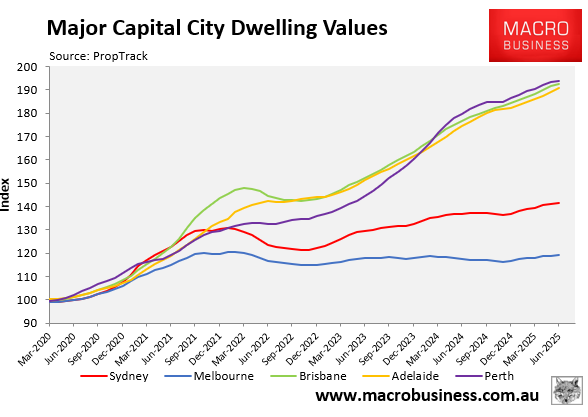
While there are idiosyncratic differences between the markets and economies, one factor that helps to explain the different home price outcomes is the divergence of population growth from the pre-pandemic trend across the various markets.
Alex Joiner, chief economist at IFM Investors, has undertaken an analysis of the growth in Australia’s civilian population aged 15-plus, taken from the monthly labour force survey, and compared it with the pre-pandemic trend.
At the national level, Joiner estimates that the working-age population is 262,077 larger than inferred by the pre-pandemic trend.
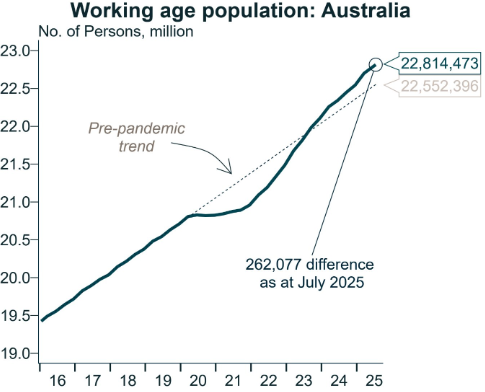
Source: Alex Joiner (IFM Investors)
However, the stronger population growth nationally was driven by Queensland, Western Australia, and South Australia.
Queensland’s resident population is tracking 145,449 above the pre-pandemic trend:
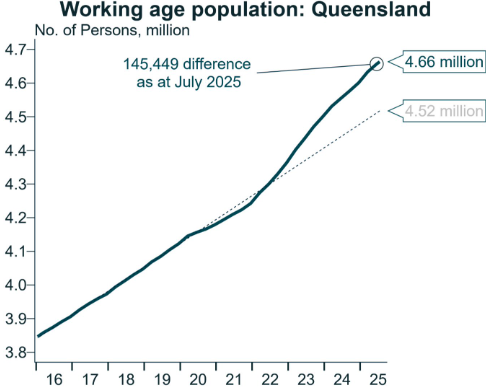
Source: Alex Joiner (IFM Investors)
Western Australia’s population is tracking 190,678 above its pre-pandemic trend:
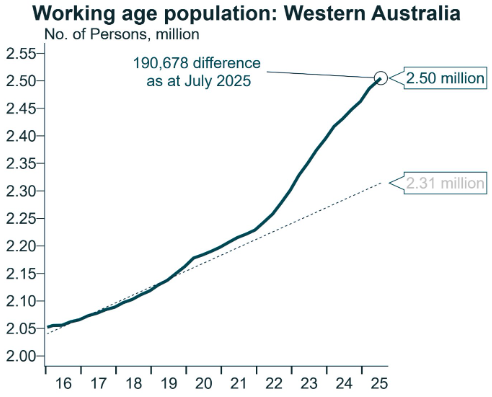
Source: Alex Joiner (IFM Investors)
South Australia’s population is tracking 34,444 above its pre-pandemic trend:
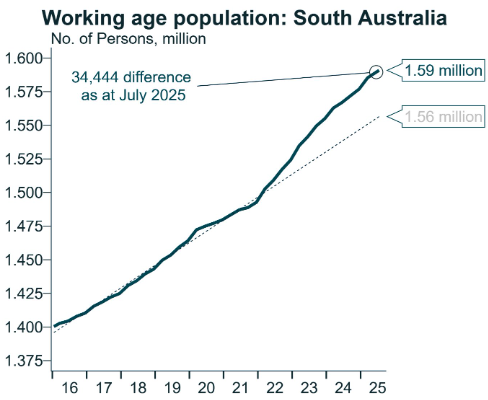
Source: Alex Joiner (IFM Investors)
Meanwhile, population growth in New South Wales, where Sydney has experienced far softer (albeit still solid) price growth, is tracking bang in line with the pre-pandemic trend:
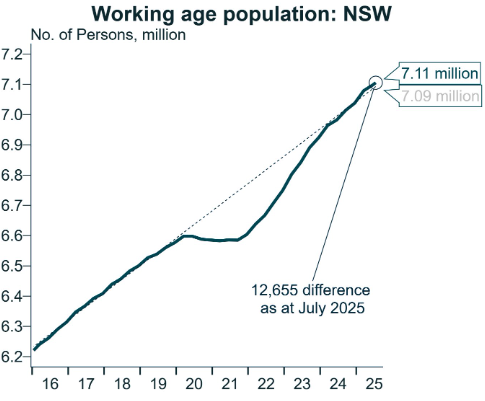
Source: Alex Joiner (IFM Investors)
Finally, Victoria’s population is tracking 106,354 behind the pre-pandemic trend, which helps to explain Melbourne’s soft price growth:
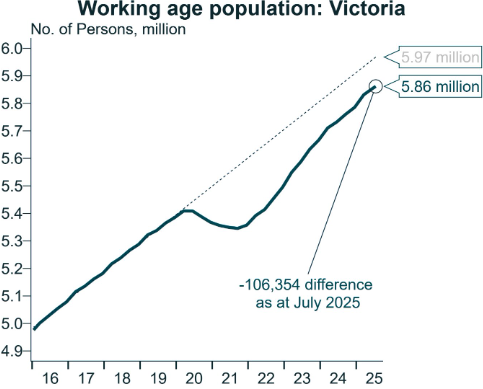
Source: Alex Joiner (IFM Investors)
Therefore, the divergence in price growth between Brisbane, Perth, and Adelaide versus Sydney and Melbourne partly reflects the divergence in population growth relative to pre-pandemic norms.

